Slum Basket Ace
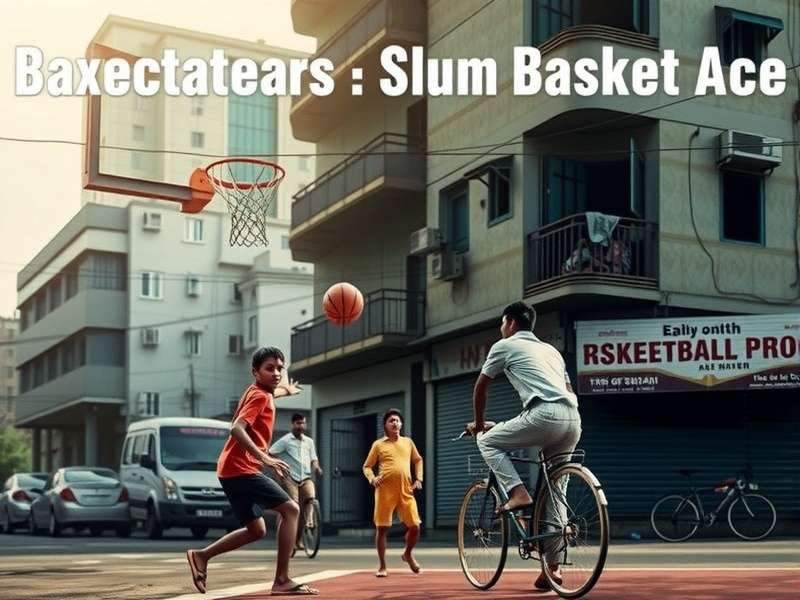
Slum Basket Ace is not just a game, yaar – it's a feeling, a vibe that captures the raw energy of India's street basketball culture. Developed by a team of young Indian gamers who grew up playing basketball in chawls and slum lanes, this mobile game has taken the nation by storm since its launch in 2022.
What makes Slum Basket Ace special? It's simple – it's our story. The game isn't set in some fancy NBA arena with polished floors and bright lights. No, bhai, it's set where we play: narrow lanes between jhopdis, open grounds with uneven concrete, under the shade of old banyan trees with makeshift hoops made from bicycle rims and netting.
Within two years of its release, Slum Basket Ace has become a household name in India, especially among youth aged 12 to 30. From Mumbai's Dharavi to Delhi's Sangam Vihar, from Chennai's slums to Bangalore's urban villages – everyone's talking about this game.
Introduction to Slum Basket Ace
Slum Basket Ace was born out of a simple idea: why aren't there games that represent our streets? The founding team, all from middle-class backgrounds in different Indian cities, noticed that most basketball games were either Western-focused or too unrealistic for Indian players.
"We used to play basketball with a rubber ball on a patch of land near our slum," says Rakesh Patel, lead game designer. "The hoop was a tire nailed to a wall. When it rained, the ground became muddy, but we still played. That's the spirit we wanted to capture in Slum Basket Ace."
The game was developed over 18 months with a small team of 15 developers, artists, and sound designers. Most of them were first-time game developers, bringing fresh perspectives and authentic local knowledge to the project.
Released initially for Android devices in March 2022, Slum Basket Ace saw immediate success, crossing 1 million downloads within the first month. The iOS version followed in June 2022, and by the end of the year, the game had over 3 million active users in India alone.
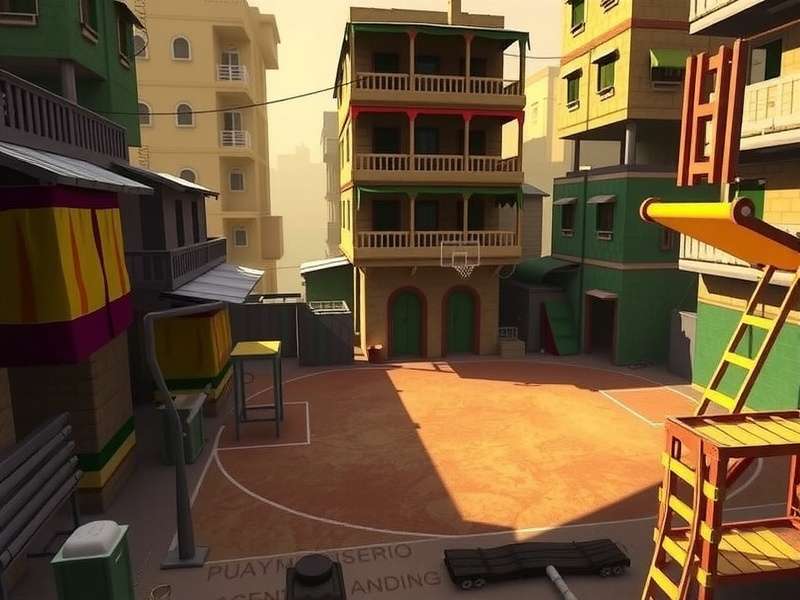
Gameplay & Features
Core Gameplay Mechanics
Slum Basket Ace offers intuitive controls that even first-time mobile gamers can master. The game uses a simple swipe system for shooting – the harder you swipe up, the higher the ball goes. Swiping left or right adjusts the angle, mimicking the real-life challenge of shooting in tight spaces.
Passing is done with a tap on a teammate, but here's the twist – in crowded slum lanes, passes can get blocked by bystanders, stray dogs, or even a vendor pushing a cart! These unpredictable elements make each match unique and true to street basketball in India.
Players can dribble by moving their finger across the screen, with special moves like crossovers and behind-the-back dribbles unlocked as you progress. But watch out – the uneven ground in slum courts can make your player trip if you dribble too fast!
Game Modes
Street Challenge Mode is the heart of Slum Basket Ace. Here, you play 3-on-3 matches in different slum locations across India. Each location has its own challenges: in Mumbai's Dharavi, the court is narrow with clotheslines crossing overhead; in Kolkata's slums, the court gets slippery during monsoon season (a special in-game event!); in Chennai, the midday sun creates glare, making shooting harder.
Story Mode follows the journey of Raju, a young boy from a Delhi slum who dreams of becoming a basketball star. You help Raju overcome obstacles – from convincing his father that basketball isn't a waste of time to competing in local tournaments. The story is full of Indian cultural references, from Holi celebrations interrupting matches to community feasts where the winning team gets extra sweets.
Multiplayer Mode allows you to play against friends or random players online. The most popular variant is "Gully Duel" – a 1-on-1 match where the first to 5 points wins. During peak hours (7 PM to 11 PM IST), millions of Indians log in to compete, making the multiplayer servers buzz with activity.
Customization & Progression
What's a street game without style, ji? Slum Basket Ace lets you customize your player with authentic Indian streetwear – from faded jeans and oversized t-shirts to lungis and kurta-pyjamas for that desi look. You can even add accessories like bandanas, sports wristbands made from old cloth, and sneakers with tape holding them together (a common sight in slum basketball courts).
As you win matches, you earn "Chawl Coins" – the in-game currency named after the chawls (tenement buildings) where many Indian slum-dwellers live. These coins can be used to upgrade your player's skills (shooting, passing, speed) or buy new equipment, like a better ball (from rubber to leather) or shoes that grip better on muddy courts.
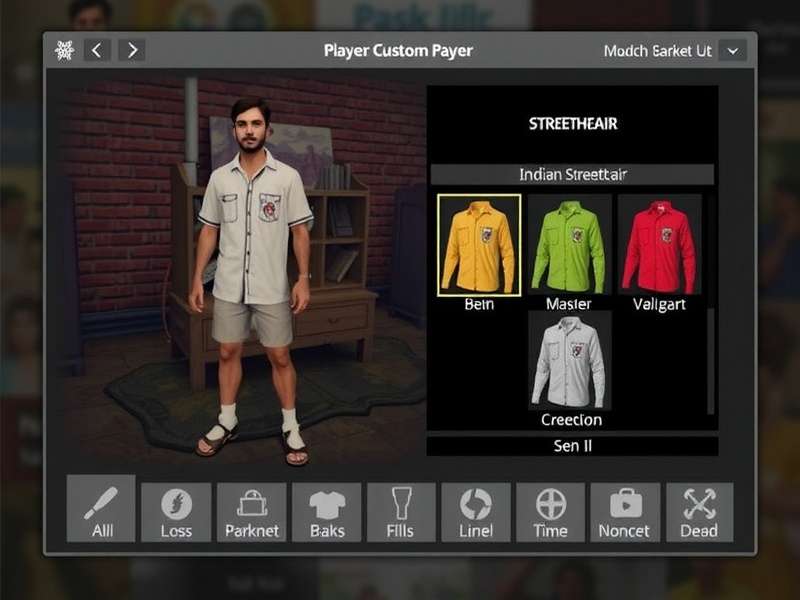
Localization in India
One of the key reasons for Slum Basket Ace's massive success is its deep localization for different regions of India. The developers understood that India isn't a single market – it's a collection of cultures, languages, and traditions, and the game reflects that beautifully.
Language Support
The game launched with support for Hindi and English, but within six months, added 10 more regional languages: Bengali, Tamil, Telugu, Marathi, Gujarati, Punjabi, Kannada, Malayalam, Odia, and Assamese. Each language isn't just a direct translation – the dialogues are adapted to local slang and expressions.
For example, in the Tamil version, characters use phrases like "Machan, innum oru goal!" (Dude, one more goal!), while in the Punjabi version, they might say "Yaar, eh match taan tere pehla!" (Brother, this match is yours!). This attention to linguistic detail has made the game feel personal to players across India.
Regional Variations
Slum Basket Ace doesn't just change languages – it changes content based on region. The Mumbai version includes references to vada pav stalls near courts, while the Amritsar version has players wearing turbans and courts near gurudwaras.
Even the music changes! In North India, the background tracks feature dhol beats and Punjabi pop, while in the South, you'll hear Tamil gaana or Telugu folk music. During regional festivals, the game adds special elements – for example, during Durga Puja in West Bengal, courts are decorated with pandals, and during Pongal in Tamil Nadu, players can collect sugarcane as power-ups.
These regional touches aren't just cosmetic. In some versions, gameplay adjusts to local preferences: in Kerala, where basketball is often played with more passing, the game rewards team play with extra points; in Punjab, where fast, aggressive play is common, speed boosts are more frequent.
Download Statistics in India
📱 Total Downloads in India (as of October 2025): 7.8 million
📱 Android Downloads: 6.2 million (Google Play Store)
📱 iOS Downloads: 1.6 million (Apple App Store)
🌍 Most Popular States: Maharashtra (2.1M), Tamil Nadu (1.5M), Karnataka (1.2M), Delhi (950K), West Bengal (800K)
📊 Active Monthly Users (India): 3.2 million
⌚ Average Daily Play Time: 42 minutes per user
🏆 Multiplayer Matches Played Monthly: 18 million+
The numbers tell a clear story: Slum Basket Ace has resonated with Indian gamers like few other local titles. Its growth has been organic, with over 70% of downloads coming from word-of-mouth recommendations, according to a 2024 survey by Indian Gaming Magazine.
Maharashtra leads in downloads, thanks in part to the game's accurate portrayal of Mumbai's slum basketball culture. The Dharavi level in the game has become so popular that local tour guides now point out the real-life locations that inspired it!
What's interesting is the game's popularity in smaller cities and towns. Places like Vijayawada, Ludhiana, and Surat account for 35% of total downloads, showing that Slum Basket Ace isn't just a metro phenomenon – it's capturing the imagination of young Indians across the country.
Player Reviews & Feedback
Indian players have embraced Slum Basket Ace with open arms, and their reviews reflect the game's authenticity and fun factor. On Google Play Store, the game has a 4.7 rating from over 150,000 reviews, while on the App Store, it holds a 4.6 rating from 45,000+ reviews.
"This game is exactly how we play in our chawl! The way the ball bounces on the uneven ground, the bystanders getting in the way – it's like they filmed our daily matches. My friends and I compete every evening, and the loser buys chai for everyone. 5 stars, no doubt!"
– Suresh, 21, Mumbai (Google Play Review)
"As a girl who plays basketball in a small town in Tamil Nadu, I never thought I'd see a character like me in a game. The Tamil dialogues are so natural – not like those cringy translations in other games. The developers really cared about making us feel seen. Thank you, Slum Basket Ace team!"
– Priya, 17, Madurai (App Store Review)
"The monsoon mode in Kolkata is genius! When it rains in real life, I can't play outside, so I play this game and feel like I'm on the court. The way the ball slips sometimes, the sound of rain – perfect. Only complaint: need more Bengali songs in the soundtrack!"
– Aniket, 24, Kolkata (Google Play Review)
Of course, no game is perfect, and players have also provided constructive feedback. Common requests include adding more female characters, improving server stability during peak hours, and introducing more regional courts (especially from Northeast India).
The development team has been responsive to this feedback. In the 2024 Diwali update, they added 5 new female characters with unique backstories, and in early 2025, they introduced courts based in Guwahati and Shillong, with local music and cultural elements.
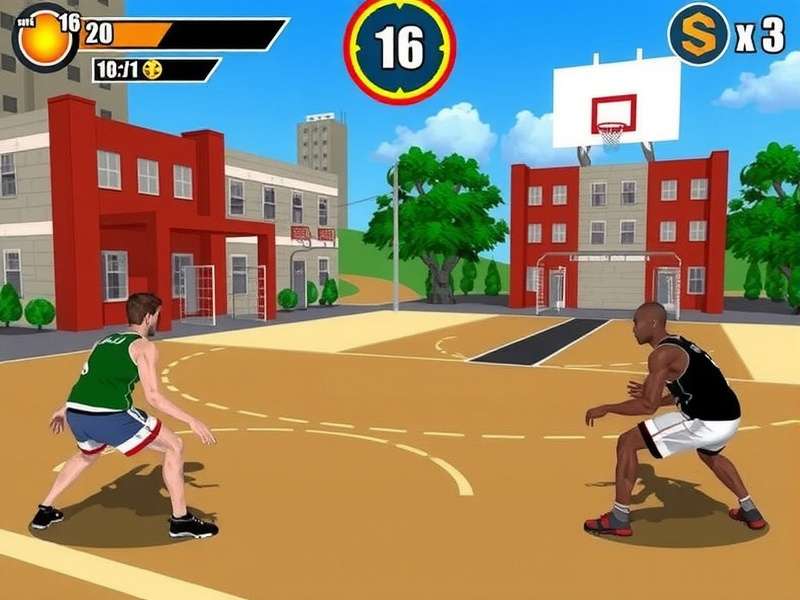
Indian Player Guides & Tips
Indian players have developed their own strategies for mastering Slum Basket Ace, passed down through WhatsApp groups, YouTube tutorials, and local gaming communities. Here are some of the most popular tips:
Shooting Tips for Different Courts
• Mumbai Courts (Dharavi): The low ceiling from clotheslines means you need to shoot with less height. Swipe gently but accurately – focus on angle over power.
• Chennai Courts: During daytime matches, the sun creates glare on the right side (since the sun is in the south). Aim slightly left of the hoop to compensate – local players call this the "Madras Adjustment."
• Delhi Courts: The wind in Delhi can affect long shots, especially in winter. Check the direction of the flags in the background – if they're blowing left, add a little right swipe to your shot.
Winning Multiplayer Matches
Indian multiplayer champions swear by these tricks:
• Use Local Power-Ups: Each region has unique power-ups (e.g., "Vada Pav Boost" in Mumbai gives temporary speed). Learn which ones appear in which locations and save them for crucial moments.
• Play Mind Games: In 1-on-1 "Gully Duel," fake a shot by swiping slightly, then quickly pass to yourself (yes, that's a move!) to get past defenders. Indian players call this the "jhootha shot" (fake shot).
• Time Your Matches: Play during off-peak hours (10 AM to 3 PM) if you're a beginner – competition is easier. Pro players wait for 9 PM to midnight when the best opponents come out, for bragging rights!
Unlocking Rare Characters
Many players struggle to unlock "Guruji," the old man who runs the local tea stall but secretly was a state-level player in his youth. Here's how:
Complete the "Chai Challenge" in Story Mode – serve 10 customers at Guruji's stall while playing matches. Do this during the "Morning Rush" (in-game time 7-9 AM) for higher chances. Once unlocked, Guruji has the best passing skills in the game!
For the female character "Meera," who's a street vendor by day and basketball star by night, you need to collect 50 "Saree Scraps" (found in alleyways during matches) and trade them at the local market in the game. Her shooting accuracy under pressure is unmatched.
Local Events & Community Activities
The Slum Basket Ace team doesn't just make a game – they build a community. They organize both in-game and real-world events that bring players together, celebrating Indian culture and basketball.
In-Game Events
• Diwali Dribble: Every October/November, the game transforms with rangoli-decorated courts and firecracker power-ups. Players collect "diyas" (lamps) to unlock special Diwali outfits, like kurta-pyjamas with intricate designs.
• Holi Hustle: During Holi, players throw colored powder at opponents to slow them down. The courts are covered in vibrant colors, and scoring a basket creates a splash of color – it's like playing in a real Holi celebration!
• Independence Day Slam: On August 15th, courts are decorated with the Indian flag. Matches reward "Tiranga Points" (tricolor points) that can be donated to real NGOs working with slum children – the game has raised over ₹20 lakhs through this event since 2023.
Real-World Events
The Slum Basket Ace team partners with local NGOs and community centers to organize real basketball tournaments in slums across India. These events, called "Slum Ace Challenges," give kids a chance to play on proper courts and meet other players.
In 2024, the Mumbai Slum Ace Challenge drew over 500 participants from Dharavi, with the winning team getting featured as a character in the game. Similar events in Chennai and Bangalore have become annual traditions, with players traveling from nearby towns to compete.
The team also organizes "Game Nights" in community centers, where players can try new updates before release and give feedback directly to developers. These nights often include free snacks (vada pav, samosas, chai) and a chance to win in-game currency.
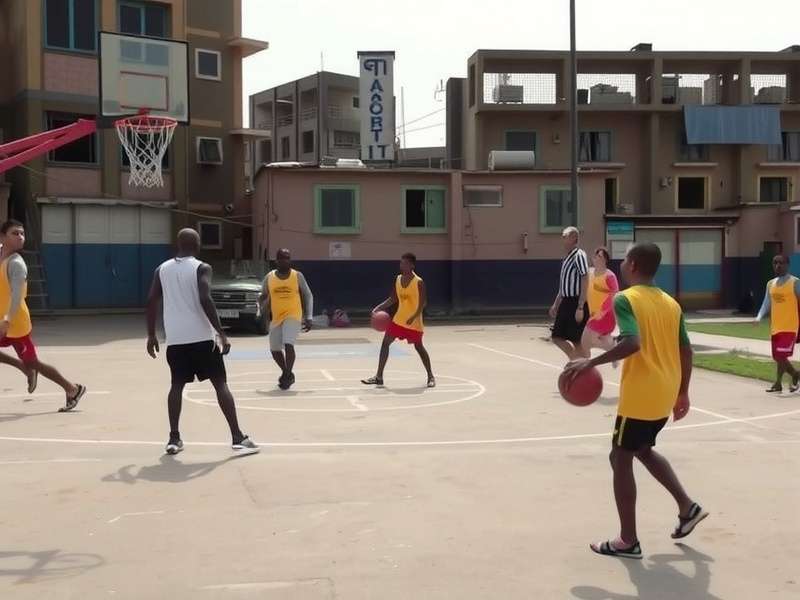
Community Discussion & Forums
The Slum Basket Ace community is active across platforms, with millions of players sharing tips, memes, and stories. Here's where you can join the conversation:
WhatsApp Groups
Regional WhatsApp groups are the backbone of the community. There are over 500 official groups, each with 250-500 members, organized by state and city. The Mumbai group is the largest, with over 10,000 members across 40 subgroups!
These groups are where players arrange multiplayer matches, share cheat codes (though the developers discourage this), and even organize real-life meetups. During cricket matches, many groups pause gaming to discuss the match – showing how the community blends different parts of Indian youth culture.
Facebook & Instagram
The official Slum Basket Ace Facebook page has 2.3 million followers, while the Instagram account has 1.8 million. These platforms feature player spotlights, behind-the-scenes looks at development, and viral videos of amazing in-game plays.
Indian players love creating memes about the game, often comparing it to real-life situations – like "When your mom calls you for dinner just as you're about to win a tournament" with a screenshot of the game's pause screen.
YouTube Channels
Over 200 Indian YouTubers have dedicated channels to Slum Basket Ace, with the top creators (like "Slum Ace Raj" from Hyderabad) boasting over 500,000 subscribers. These channels feature gameplay tutorials, tournament highlights, and interviews with other players.
Many creators host live streams during major in-game events, with viewers donating money to request specific plays. The biggest streams can get over 100,000 concurrent viewers during events like the Diwali Dribble.
Technical Details & Requirements
Slum Basket Ace is designed to work on most Indian mobile phones, even budget models, which is crucial for its widespread adoption. The developers optimized the game to run smoothly on devices with limited RAM and storage.
System Requirements
• Android: Version 7.0 or higher, 2GB RAM, 500MB storage space
• iOS: iOS 12.0 or later, compatible with iPhone 6s and above, 550MB storage space
The game uses low-data mode for players with limited internet, reducing data usage by up to 70% during matches. This is a game-changer for players in rural areas or those using mobile data with daily limits.
Updates & Maintenance
The team releases major updates every 3 months, with smaller bug fixes every 2 weeks. Updates are scheduled during early morning hours (2-5 AM IST) to minimize disruption, as most players are active in the evenings.
Before each update, the team sends SMS reminders to players (since many don't check email) and provides in-game rewards for downloading updates within 48 hours – usually 1000 Chawl Coins or a free outfit.
Future Updates & Plans
The Slum Basket Ace team has big plans for the coming years, based on player feedback and their own vision for the game.
In early 2026, they plan to launch a "Village Mode," featuring basketball courts in rural India – think courts near ponds, with cows wandering by and matches interrupted by passing tractors. This mode will include new characters like a farmer who plays barefoot and a school teacher who organizes village tournaments.
Another highly anticipated update is the "Pro League," where top players can compete for real prizes – like basketball kits, smartphones, and even scholarships for sports coaching. This is part of the team's mission to use the game to support real-world basketball development in India.
They also plan to expand language support to include more dialects, like Bhojpuri and Rajasthani, and add more regional festivals, such as Onam in Kerala and Baisakhi in Punjab.
Conclusion
Slum Basket Ace is more than a mobile game – it's a cultural phenomenon that celebrates Indian street life and basketball. By staying true to local roots while delivering engaging gameplay, it has won the hearts of millions of Indians.
Whether you're a seasoned basketball player or someone who's never held a ball, Slum Basket Ace offers an authentic, fun experience that feels like home. It's a testament to what happens when Indian developers create games for Indian players – magic, ji!
So what are you waiting for? Join the millions of Indians already playing – download Slum Basket Ace today and show the world what slum basketball is all about!